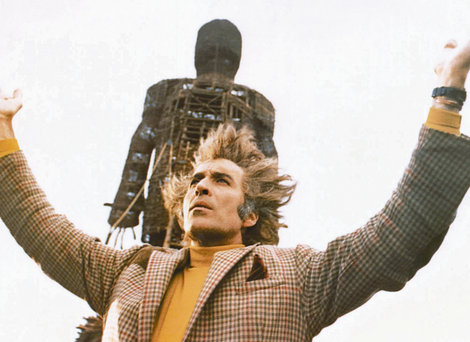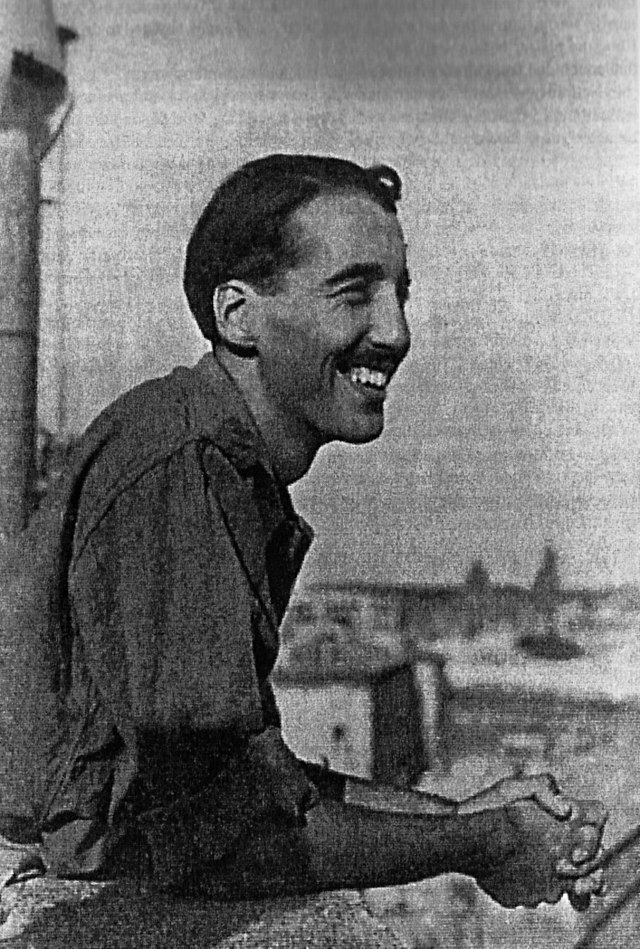DaGip wrote:mrswdk wrote:TA1LGUNN3R wrote:mrswdk wrote:Sackett58 wrote:he says, ‘Peter, have you ever heard the sound a man makes when he’s stabbed in the back?’ And I said, 'Um, no.’ And he says 'Well, I have, and I know what to do.’”
Sure he had.
Uh, he served for quite a while in WWII, and was even attached with SAS for a bit. I'm sure he had.
-TG
According to Wikipedia he was in the air force.
Where apparently you can see thousands of people on the ground getting stabbed in the back.
I see at least three opportunities for hand-to-hand action in his record:
- During his time as a jail guard at Salisbury
- During the post-war hunt for Nazis, many of whom didn't go quietly but were quite prepared to make a last stand, and most importantly
- during his time with the Gurkhas, who had a philosophy of not wasting bullets when a knife would do.
Lee reported to RAF Uxbridge for training and was then posted to the Initial Training Wing at Paignton.[39] After passing his exams in Liverpool, the British Commonwealth Air Training Plan meant that he travelled on the Reina del Pacifico to South Africa, then to his posting at Hillside, at Bulawayo in Southern Rhodesia.[40] Training with de Havilland Tiger Moths, Lee was having his penultimate training session before his first solo flight when he suffered from headaches and blurred vision. The medical officer hesitantly diagnosed a failure of his optic nerve and he was told he would never be allowed to fly again.[41] Lee was devastated and the death of a fellow trainee from Summer Fields only made him more despondent. His appeals were fruitless and he was left with nothing to do.[42] He was moved around to different flying stations, before going to Salisbury in December 1941.[43] He then visited the Mazowe Dam, Marandellas, the Wankie Game Reserve and the ruins of Great Zimbabwe. Thinking he should "do something constructive for my keep", he applied to join RAF Intelligence. His superiors praised his initiative and
he was seconded into the Rhodesian Police Force and was posted as a warder at Salisbury Prison.[44] He was then promoted to leading aircraftman and moved to Durban in South Africa, before travelling to Suez on the Nieuw Amsterdam.[45]
After "killing time" at RAF Kasfareet near the Great Bitter Lake in the Suez Canal Zone, he resumed intelligence work in the city of Ismaïlia.[46] He was then attached to No. 205 Group RAF before being commissioned as a pilot officer at the end of January 1943[47] and attached to No. 260 Squadron RAF as an intelligence officer.[48] As the North African Campaign progressed, the squadron "leapfrogged" between Egyptian airstrips, from RAF El Daba to Maaten Bagush and on to Mersa Matruh. They lent air support to the ground forces and bombed strategic targets. Lee, "broadly speaking, was expected to know everything."[49] The Allied advance continued into Libya, through Tobruk and Benghazi to the Marble Arch and then through El Agheila, Khoms and Tripoli, with the squadron averaging five missions a day.[50] As the advance continued into Tunisia, with the Axis forces digging themselves in at the Mareth Line, Lee was almost killed when the squadron's airfield was bombed.[51] After breaking through the Mareth Line, the squadron made their final base in Kairouan.[52] After the Axis surrender in North Africa in May 1943, the squadron moved to Zuwarah in Libya in preparation for the Allied invasion of Sicily.[53] They then moved to Malta, and, after its capture by the British Eighth Army, the Sicilian town of Pachino, before making a permanent base in Agnone Bagni.[54] At the end of July 1943 Lee received his second promotion of the year, this time to flying officer.[55] After the Sicilian campaign was over, Lee came down with malaria for the sixth time in under a year. He was flown to a hospital in Carthage for treatment and when he returned, the squadron was restless. Frustrated with a lack of news about the Eastern Front and the Soviet Union in general, and with no mail from home or alcohol, unrest spread and threatened to turn into mutiny. Lee, by now an expert on Russia, talked them into resuming their duties, which much impressed his commanding officer.[56]
After the Allied invasion of Italy, the squadron was based in Foggia and Termoli during the winter of 1943. Lee was then seconded to the Army during an officer's swap scheme.[57] He spent most of this time with the Gurkhas of the 8th Indian Infantry Division during the Battle of Monte Cassino.[58] While spending some time on leave in Naples, Lee climbed Mount Vesuvius, which erupted three days later.[59] During the final assault on Monte Cassino, the squadron was based in San Angelo and Lee was nearly killed when one of the planes crashed on takeoff and he tripped over one of its live bombs.[60] After the battle, the squadron moved to airfields just outside Rome and Lee visited the city, where he met his mother's cousin, Nicolò Carandini, who had fought in the Italian resistance movement.[61] In November 1944, Lee was promoted to flight lieutenant and left the squadron in Iesi to take up a posting at Air Force HQ.[62] Lee took part in forward planning and liaison, in preparation for a potential assault into the rumoured German Alpine Fortress.[63]
After the war ended, Lee was invited to go hunting near Vienna and was then billeted in Pörtschach am Wörthersee.[64] For the final few months of his service, Lee, who spoke fluent French and German, among other languages, was seconded to the Central Registry of War Criminals and Security Suspects.[65] Here, he was tasked with helping to track down Nazi war criminals.[66] Of his time with the organisation, Lee said: "We were given dossiers of what they'd done and told to find them, interrogate them as much as we could and hand them over to the appropriate authority ... We saw these concentration camps. Some had been cleaned up. Some had not."[66] Lee then retired from the RAF in 1946 with the rank of flight lieutenant.[65]

































 3
3




 2
2



































































































 3
3




 2
2










































































 3
3




 2
2
























































